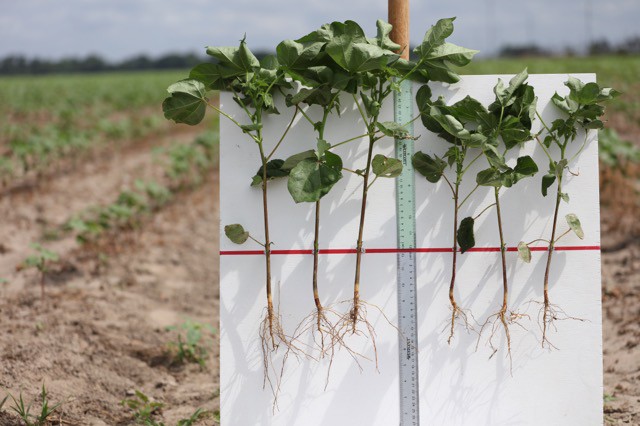New Way to Boost Crop Production Doesn’t Rely on GMOs or Pesticides
A new treatment for cotton seeds draws on beneficial microbes that live inside plants—much like the good bacteria in our own guts—to help the crops thrive in dry conditions.
The microbe-enhanced cotton, the first product from startup Indigo Agriculture, is already growing on 50,000 acres spread across five different states in the southern United States. Indigo CEO David Perry says the treatment increases yield as much as irrigation can. The company also today announced a new $100 million investment round that brought its venture funding total to $156 million.
Many experts argue that global agricultural productivity is not growing fast enough to keep up with the increase in global demand for food. Intense competition for land and pressures to reduce chemical fertilizer and pesticide use have led technologists to search for new ways to increase yield. Adding beneficial microbes to crops could be an effective but less controversial alternative to genetic engineering.

Seed treatments containing such microbes are part of an emerging class of agricultural technologies known as “biologicals.” The microbiome—the communities of bacteria and fungi that live in the soil around the roots, on the surface of the plant, and inside the plant tissue—contributes to a plant’s health and growth. The idea is that by isolating these good bacteria and fungi and then adding them back into the plant, they could stimulate more growth and make crops healthier.
Agriculture companies including Monsanto have already released a number of microbial products. But most of what’s on the market now is focused on organisms that live in soil. Indigo’s focus is on so-called endophytes, or the bacteria and fungi that actually live in the plant tissue. Researchers have studied the interactions between these particular microbes and their plant hosts for several decades, but are just now beginning to realize how to apply what they've learned, according to Betsy Arnold, a professor of plant sciences and ecology and evolutionary biology at the University of Arizona, and an academic collaborator with Indigo.

Recent advances in DNA sequencing and inexpensive computing have made it more economical to perform computational analysis on huge databases of microbial genetic information in search of insights that might help improve crops. Indigo has built a database of tens of thousands of individual microbes isolated from crops that thrive under harsh conditions. The company’s scientists use machine learning and other techniques to probe that data in search of new insights.
Tyler McClendon, president of Oxbow Agriculture, which is currently growing 1,000 acres of Indigo’s cotton, says he believes Indigo’s focus on isolating specific microörganisms that seem to help plants thrive under stress makes more sense than the “broad based,” soil-focused approaches other companies are taking.
McClendon says Indigo’s business model is also unique, in that the final cost of the technology to the farmer is tied to a “measurable increase in crop yield.” Under the traditional model, farmers must pay for everything up front and then hope for the best, says Perry. Indigo doesn’t ask for much financial commitment up front, he says. Instead, he says, “we ask for a share of the value we create at harvest.” McClendon says this kind of approach makes farmers more receptive and could speed the adoption of new biotechnologies.
Deep Dive
Policy
A brief, weird history of brainwashing
L. Ron Hubbard, Operation Midnight Climax, and stochastic terrorism—the race for mind control changed America forever.
Why the Chinese government is sparing AI from harsh regulations—for now
The Chinese government may have been tough on consumer tech platforms, but its AI regulations are intentionally lax to keep the domestic industry growing.
AI was supposed to make police bodycams better. What happened?
New AI programs that analyze bodycam recordings promise more transparency but are doing little to change culture.
Three ways the US could help universities compete with tech companies on AI innovation
Empowering universities to remain at the forefront of AI research will be key to realizing the field’s long-term potential.
Stay connected
Get the latest updates from
MIT Technology Review
Discover special offers, top stories, upcoming events, and more.